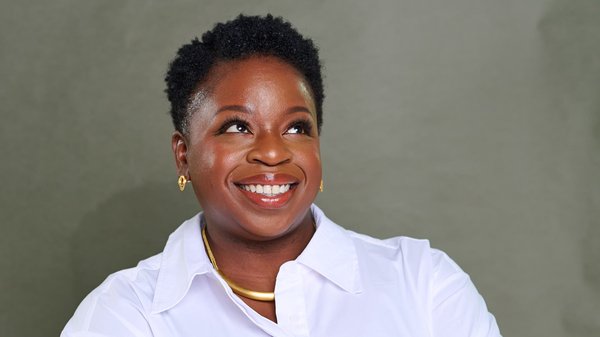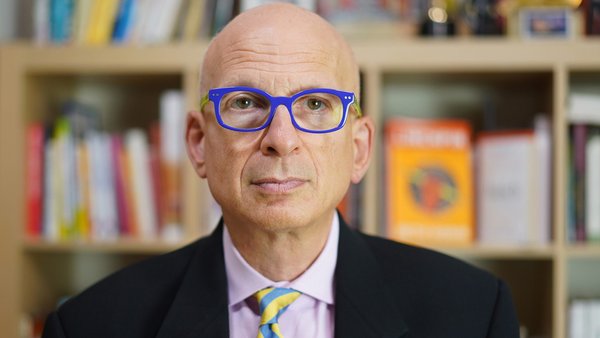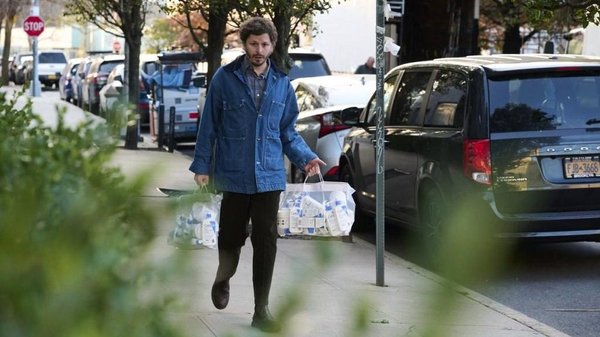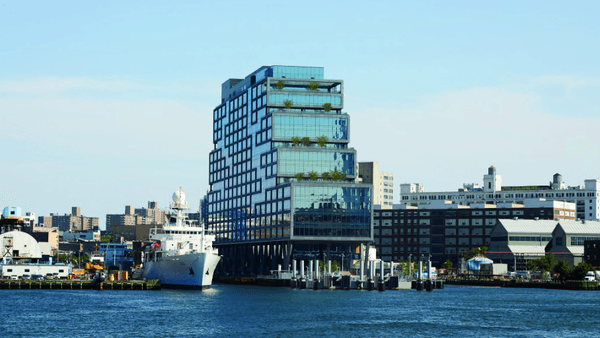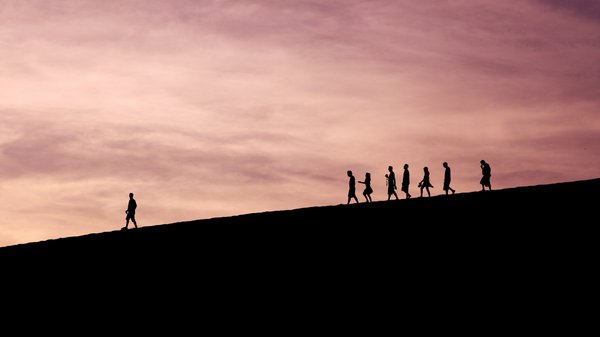‘Ad agencies have been running an all-you-can-eat-buffet for years’ /
Caroline Johnson, co-founder of The Business Model Company, on why the billable hour has become the advertising industry’s burning platform
James Swift
/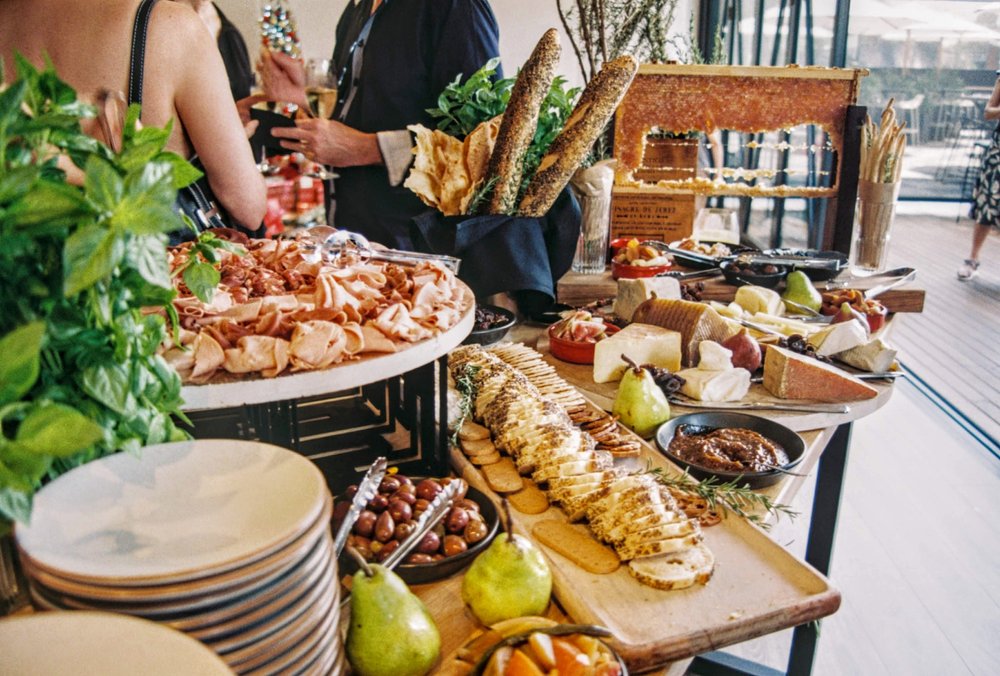
Photo by Yukiko Kanada on Unsplash
Michael Farmer’s latest book, Madison Avenue Makeover, is about the transformation of digital creative agency Huge under the leadership of CEO Mat Baxter.
A driven and unconventional character, Baxter was the catalyst and impetus for Huge’s reinvention as a creative consultancy selling fixed-price products – but he was not the architect. That role was played by Caroline Johnson, co-founder of The Business Model Company (TBMC).
Baxter hired Johnson and TBMC just a few months after being parachuted into Huge by Interpublic Group in 2021, and he tasked her with designing and implementing a new business model for the stagnant agency.
In his book, Farmer describes TBMC as a consulting firm with a clear view about what’s wrong with the creative agency model and what must be done to escape the vicious cycle of swelling workloads and shrinking margins.
‘Their approach,’ wrote Farmer, ‘was: “Follow our program, and you will be successful. We know what you need. We know how to get you there.”’
After publishing an interview with Farmer last month, we followed up with Johnson, who has been consulting to creative agencies about their operations since the mid 1990s, to find out more about the creative agency business model, its flaws and its future.
She talked to us about why the billable hour was a mistake from the start, why creative agencies must believe in themselves, and what sort of margins they could make if they changed model.
For how long has it been obvious to you that there were problems with the creative agency business model?
I would say we became acutely aware that the model was damaging the industry and also constraining creativity back in 2000. Michael Farmer in his first book, Madison Avenue Manslaughter, does a great job explaining the history of how the billable hour came about. And even when it was first adopted by our industry, it was the wrong model.
I think now the entire global creative industry – but also I'd widen that to the global marketing services industry – is acutely aware that we’re in a business model crisis. And actually, we have been ignoring that crisis for probably the past 25 years.
So as far as you’re concerned, it’s the billable hour that’s the main culprit?
It's more than that. It's the way we equate our value to effort. We don't value creativity. What we are valuing is the effort it takes to deliver that creativity; that's what we're monetising.
So we're focused on effort and trying to monetise effort, not the value of creativity to deliver fantastic outcomes and business results for our clients. And that has caused a complete crisis in our industry [...] the burnout rate of our talent, the lack of respect that we have commercially as an industry. There are so many really obvious symptoms to the problems of being on the wrong model.
And before the billable hour most creative services were given away for free as part of the media buying service. So there’s never really been a ‘right’ model for creative agencies, has there?
Exactly. When creative agencies had media commission, they knew they were making their 15% margin from the media. So a lot of the additional services that agencies back then invested in – account management for one, strategy and planning for another – were there as additional service elements to the main commercial model. And they were there to retain clients and also differentiate [agencies] from their competitors. But the margin was taken from the media, so there was less of a requirement to properly monetise creativity or additional capability areas, like strategy and planning. And then as we became more full service, we added more talent and more capability, but we lost the central core of the commercial model, where we were monetising to a level that allowed the agencies to keep investing in that capability and that talent.
Caroline Johnson, The Business Model Company
I think at that point a shift was required, to start focusing on the value created for clients rather than charging for the effort it takes to deliver that value, because that encourages complete inefficiency in the delivery model in the operating system.
A lot of the issues around why it's so difficult to change models is because we've allowed this to go on for so long. It's now the burning platform that the industry is still talking about, but there's still not enough evidence of change.
Do you look at other industries? The legal industry has been debating the billable hour for years, but it hasn’t changed, either.
The difference between the legal industry and the creative industry is that the legal industry has been incredibly rigorous about not only the billable hours but the billable minutes. And if you are going to run a labour model, then you need to be tough, you need to be unemotional about it. The legal industry doesn’t have what I call ‘the goodwill service model’, which is, ‘the more we give away for free, the more value we will see coming back at us’. That is the wrong assumption and the wrong paradigm.

Photo by Mikhail Pavstyuk on Unsplash
The creative industry works on the goodwill service model, which is, ‘If we give away our fantastic creativity in pitches, we're more likely to win the pitch. If we over-service clients and say yes to everything with no commercial parameters, we're more likely to be popular with our clients and get more briefs’. It's commercially un-viable as a business model.
The legal industry, they have mastered that labour model. They need to evolve beyond it, absolutely, but at least there is rigor and clear commercial parameters. We haven't adopted that at all. We've failed to master that labour model spectacularly – and it was the wrong model from the beginning.
Are there creative agencies for which the current model does work? Obviously there have been some industry successes. Uncommon was reportedly sold on a valuation of over $100m just recently.
It really depends on what your assumptions are around success and growth and shareholder value. There are plenty of examples of creative businesses that have set themselves up as creative businesses in a much more appropriate model, and there are plenty of creative agencies that have, what I would call, changed neighborhood – moved across into either more of a consultative model, where they are value pricing and probably doing less of the commoditised services, or an advisory model, or even a tech platform model. So the issue isn't so much ‘is it happening and can people do it?’, it’s ‘why aren't more businesses doing it?’
What’s an example of a creative company that's changed neighbourhoods?
We did a joint case history of one of our clients in London a few years ago with a fantastic creative business called Here Design. They used creativity to be able to move from commoditised services and charging by the hour, to designing beautifully packaged creative products for their clients, which they then placed on a client self-service platform. And they switched their business model from services and effort and commoditisation to creative packages, creative programmes, creative outputs, that also gave their clients an engagement model that was really easy to interact with.
How can you be sure that it’s the business model, and not the changed media and tech landscape, that has commoditised creativity?
The right business model can adapt to changing external market conditions. And the commoditisation of creativity is a direct result of the business model. We have devalued our own creativity, and therefore we have allowed that to happen.
If we look at what is a business model, because we should all be working to the same definition of what is a business model, we always explain business models as a triangle. You've got the three tips of that triangle: a business model is simply at the top of the triangle, how you create value in the marketplace. So that is your positioning, how you package what you do. Then it's supported by two other tips of the triangle. You've got, how you deliver value, which is your operating system, and how you capture that value, which is how you monetise and how you develop your commercial model as well.
Caroline Johnson, The Business Model Company
So any balanced business model will have complete alignment between how you create value, how you deliver value and how you capture value. You can't make an adjustment on one of those corners without re-aligning the other two. As an industry, we will keep changing our positioning, for example, in the hope that that will extend our ability to capture revenue from our clients. But in adding more services, we don't then make any adjustments in how we deliver and how we capture that value. So the business model is those three things, which are codependent, in complete alignment. If you have that right, then that business model is designed to be able to adapt quickly to market changes. For example, the huge disruption and opportunity that will come our way through AI: the right business model can embrace and adapt to that really quickly. But if you haven't got that balance and alignment in your business model, then everything that happens externally becomes problematic.
What are the alternatives to the current creative agency business model?
I would first of all approach your question not necessarily by talking about models, but what needs to come before models, which is to change our belief system.
What we are lacking as a creative industry is commerciality and commercial strength, externally with our clients but also internally. Our belief system as an industry is based on the wrong assumptions. And that's the heart of the problem. Commerciality is how you create value. It comes from a creative place, it's an extension of creativity. And that's why I say, as an industry, we’re missing one of our superpowers, which is commerciality. We’re seeing commerciality as the antithesis of creativity. It's not – it is creativity. How you package and how you value what you are delivering, and how you create a commercial model and commercial parameters around how you operate, the design of it comes from creativity. We innately have this as an industry, but it’s a muscle that has not been identified and not trained. I think if we can make the shift to embrace commerciality as a creative power, then we are going to be so much stronger and better equipped to change our business model.

Photo by Victor Freitas on Unsplash
Why do you think it is that the industry has neglected commerciality? Is it a hangover from how the creative advertising industry started, as an add-on service? Or is it related to the kind of people that creative agencies attract, who are more interested in art and culture than sales?
Personally, I think we have embraced the relationship part of the business model with our clients. And we have a belief system that has not served us well, which is what I call the goodwill service mentality. We over-indexed on keeping the relationship sweet as a way of being rewarded with more revenue, and that has [led to] commoditisation. So I think probably part of the answer is we hung all our hopes on the relationship and undervalued our commercial accountability and responsibility.
It sounds like agencies have too little confidence in their own product.
Exactly right. Most of our creative value and brilliance as an industry is given away for free in a pitch. And if that is the start of the relationship and the start of the engagement model, where do you go from there? If we don't value [creativity] and protect it, then how are we expecting our clients, or our competitors, to value and protect it, either? We're screwed from the beginning. You've got to claw your way back up from that point.
Have you seen enough to know that these new business models work?
Of course they work! Brands and advertisers buy product businesses all the time. But if you are predominantly in the goodwill service model and you decide to do a bit of productisation, you will find that very difficult because you are still in the same game.
The way I visualise it is you have been running an all-you-can-eat-buffet for years and you decide that the smoked salmon is too valuable to be on that all-you-can-eat buffet. So one morning you erect a side table, and you put the smoked salmon on a side table with maybe a glass of prosecco, and you price them separately. Your clients have been enjoying the odd glass of prosecco and the smoked salmon for free on the all-you-can-eat buffet for quite a long time. Do you think they're going to pay extra for the prosecco and the smoked salmon, when everyone else has it on the all-you-can-eat buffet? Of course they're not. That's why tentative steps are not enough. You haven’t changed the engagement or what clients think they are paying for, and therefore what should be available to them. So it requires systematic, rigorous change across all aspects of that business model.
When you approach it in the right way, you will be successful because we as consumers buy products and value-priced services all of the time. It's not that they don't exist. Of course they exist. It's just that the creative industry has been extremely tentative and fearful of change because its paradigm is all about maintaining the relationship at the cost of commerciality, which has then led to a lack of respect, a talent drain, talent burnout and complete commoditisation of creativity.
What kind of benefits do these transformations confer? How much difference does it make to an agency’s margin or other KPIs?
The most important performance indicator when you are changing your business model is gross revenue per head, or gross profit per head, which is your gross profit or your revenue divided by your number of people, including freelancers as well. When you are changing models, you would expect to see a significant sustainable increase in gross revenue per head. So many businesses that we work with have already done some productisation, but it hasn't transformed that gross revenue per head figure. So therefore, they haven't really followed the model in terms of better monetisation. It’s really common when repackaging services into products or programmes, and completely rewriting the language, to go from achieving a 13% net margin to a 33% net margin. And a lot of our clients will go higher than that.
Caroline Johnson, The Business Model Company
So, that is net margin by product or program, but what we are really looking for as a sustainable indicator that we have transformed that business model, is the revenue per head. In the creative industry, the revenue per head is normally just under £100,000. That seems to be the ceiling. Therefore to add more profit, you tend to add more people, which puts more pressure on the business model. When you change models, with this exact same talent base, you would perform to a different set of KPI performance metrics. So if we are moving you to a different neighbourhood, which is more of a consultative value-price model, you would be looking to monetise your people at £300,000, without adding any more people.
And because in the work that we do, we are codifying and standardising the delivery methodology, and we are working from a fixed-cost base, margin is not left to chance. The commercial model is set from the beginning and there is really very little opportunity to mess that up. Therefore, the actual change is not difficult. But, the second part of my answer to your question, is that before you even think about doing that, we've got to change the belief system. You absolutely need to be committed to change your business model as a leader, but actually the change is about following the right methodology and process safely, to be able to make the transition. I always say to my clients that change is uncomfortable but not changing is terrifying. So for me, it's the part of our industry that is paralysed around this question of change that is brave. You have got to be extremely brave to be doing nothing at the moment.
When we spoke with Michael Farmer one of the things that came up was the idea that it’s very difficult to apply a productisation model to an agency that does lots of different things for clients. Is that the case? Are some agencies just not set up to change?
Yes, absolutely, because of their belief system. If you've got the wrong belief system and you don't believe you can change the model for creativity and that creativity won't thrive and be liberated in a different business model, then you're going to find it very difficult.
It's an attitudinal issue that we are having a problem with – this fear and paralysation that we can't better serve creativity in a different business model. What I would say to the creative industry is that changing the business model takes rigour and you have to be a committed leader. But creativity thrives and is liberated when it is supported and underpinned in the right business model. Products are just vehicles. You don't go from selling creativity to selling products. That's the wrong way of thinking about it. Creativity can be better supported in a more productised business model.
Do you see any commonalities between the agency leaders who come to use your services? Do they tend to be outsiders like Mat Baxter (Huge CEO) or do they tend to be people that have hit rock bottom and feel like they have no other option?
The common thread is always they're committed. Sometimes they're outsiders that have come in with a change agenda. Sometimes they're not. But every single one of the leaders we work with is committed. I would never use the word brave. As I've explained before, the brave ones are the ones who are doing nothing.
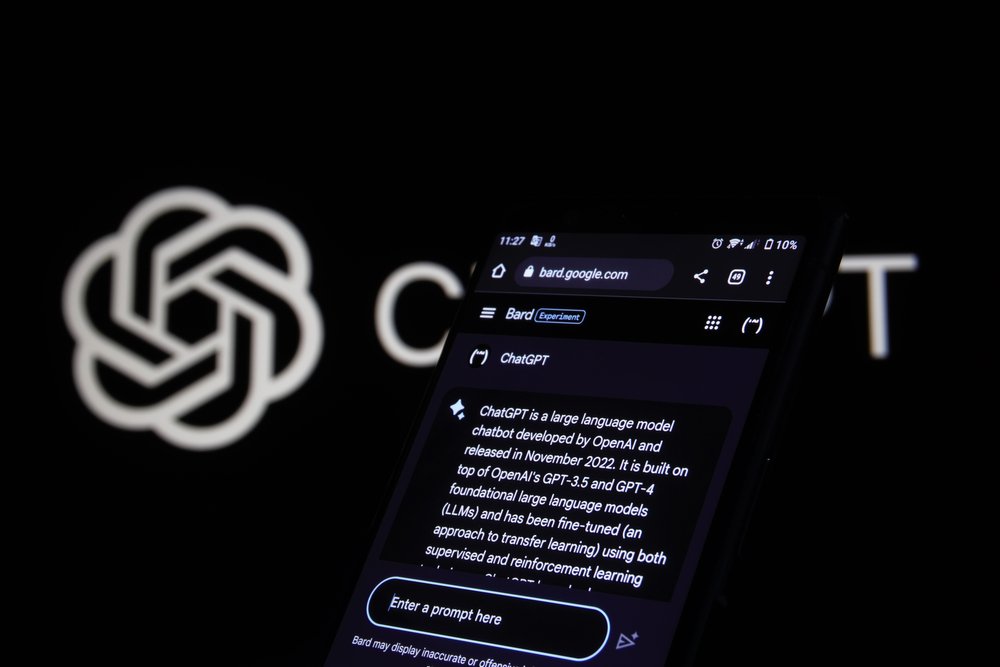
Photo by Mojahid Mottakin on Unsplash
From your perspective, is the impact of AI on ad agencies still theoretical, or is it here already?
Because of the difficulties in the business model that we have been talking about, the creative industry has been slow to embrace the advantages of AI. This is why I talked about this being the burning platform earlier. If you have made really great strides forward in your business model, then you have the opportunity to be able to fully embrace AI, understand its role within your business, understand its role within your clients’ business, and it's going to be really important. But if you're stuck in the labour model, then I don't see how you’re going to be able to sustain your business in the next three to five years.
Is there anything else people should know about changing creative agency business models?
The most important thing, when you are changing your business model, is you have to be authentic. And that goes back to the all-you-can-eat buffet. If you go to market with an authentic business model, your clients will embrace and accept it. If you're not authentic, they will take you back to the rules of the game that they actually see apply to you. So, if you're predominantly a service business and you do some productisation, and you go to your clients and say, ‘Here are all our services, which is the all-you-can-eat buffet, and here are some products, please buy these products’, your clients will not see that as authentic. They'll push you back to hours and rates. So the most important key factor of sustainable success in changing your business model is the authenticity to your clients and the market and your talent of that new business model. If it's authentic, it will work. If it's not perceived as authentic, internally and externally, it won't work.
Want more of the same? /
We don’t just write about best-in-class campaigns, interviews and trends. Our Members also receive access to briefings, online training, webinars, live events and much more.
